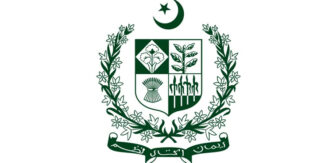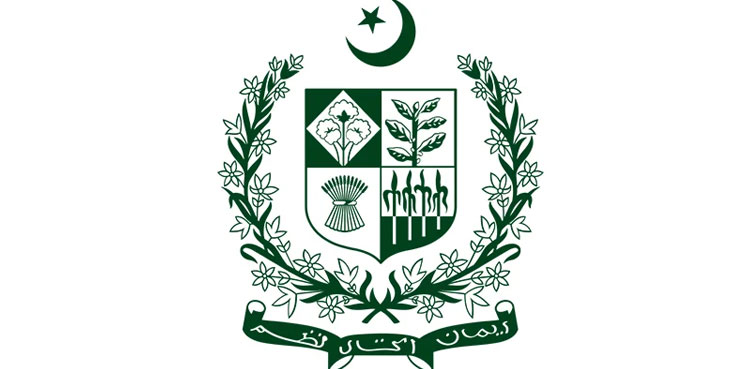Federal Government Establishes “National Peace Message Committee” to Combat Sectarianism and Hate Speech
ISLAMABAD, PAKISTAN – In a significant move to address rising extremism and social fragmentation, the federal government has formed the Qaumi Paigham-e-Aman Committee (National Peace Message Committee), a high-level body tasked with developing a unified national narrative against sectarianism, hate speech, terrorism, and religious intolerance. The committee, announced by the Ministry of Information and Broadcasting, will operate under the leadership of Federal Information Minister Attaullah Tarar and comprise prominent religious scholars, minority representatives, and senior officials .
📋 Committee Composition and Structure
Leadership and Coordination:
Chairperson: Federal Information Minister Attaullah Tarar.
Coordinator: Maulana Tahir Mehmood (also referred to as Maulana Tahir Ashrafi in earlier reports) .
Religious and Minority Representatives:
Sunni Scholars: Senator Hafiz Abdul Karim, Mufti Abdul Rahim, Allama Arif Hussain Wahidi, Pir Naqeeb-ur-Rehman, Allama Muhammad Hussain Akbar, Dr. Muhammad Raghib Hussain Naeemi, Maulana Tayyab Panjpiri, and Allama Ziaullah Shah Bukhari.
Minority Leaders: Bishop Azad Marshall (Christian), Rajesh Kumar Hardasani (Hindu), and Sardar Ramesh Singh Arora (Sikh) .
Government Officials:
Additional Secretaries from the Ministries of Interior and Religious Affairs.
Director General of Religious Education (DGRE).
Coordinators of provincial and regional peace committees.
Representatives of recognized madrassa boards .
🎯 Mandate and Objectives
Unified National Narrative:
Develop counter-narratives to extremism and hate speech, emphasizing interfaith harmony and social cohesion.
Address sectarian divisions and promote tolerance through religious and community-led initiatives .
Operational Framework:
Function as a sub-committee of the broader National Committee for Narrative Formation.
Finalize Terms of Reference (ToRs) in its inaugural meeting for approval by the parent committee .
Grassroots Engagement:
Collaborate with provincial peace committees and madrassa boards to ensure nationwide outreach.
Utilize media campaigns and educational programs to disseminate messages of peace .
🌍 Context and Urgency
Rising Hate Speech and Extremism:
Pakistan has witnessed a surge in online and offline hate speech, particularly targeting religious minorities such as Hindus, who face derogatory labeling, forced conversions, and digital harassment .
Blasphemy accusations are increasingly weaponized via social media, with organized groups exploiting these allegations for extortion and persecution .
International and National Pressures:
The UN Secretary-General’s 2025 message highlighted the global threat of hate speech, exacerbated by AI-driven amplification, and called for stronger safeguards .
Pakistan’s Permanent Representative to the UN, Ambassador Asim Iftikhar Ahmad, recently urged full implementation of the UN Strategy and Plan of Action on Hate Speech, warning that unchecked hatred could fracture societies .
Legal and Institutional Gaps:
Despite existing laws like the Prevention of Electronic Crimes Act (PECA), enforcement remains weak, and vague definitions allow misuse against minorities .
Recent cases in Sahiwal, where individuals were booked for sectarian incitement, underscore the need for coordinated action .
⚖️ Challenges and Criticisms
Digital Hate Campaigns:
Social media platforms are exploited to spread anti-minority rhetoric, including terms like Wajib-ul-Qatal (deserving to be killed) and Kafir (infidel) .
Algorithms on platforms like Facebook and YouTube reinforce echo chambers, limiting exposure to counter-narratives .
Structural Barriers:
Minorities often self-censor online, adopting Muslim-sounding pseudonyms to avoid harassment, which restricts their digital participation and economic opportunities .
The PECA amendments grant excessive power to the Pakistan Telecommunication Authority (PTA) to block content without judicial oversight, potentially silencing legitimate dissent .
Historical and Cultural Factors:
Persistent biases rooted in pre-partition animosities continue to marginalize minorities, contradicting Jinnah’s vision of a pluralistic Pakistan .
🛠️ Proposed Strategies and Actions
Counter-Narrative Development:
Leverage religious scholars and minority leaders to create content that promotes mutual respect and counters extremist ideologies.
Utilize media channels, including social media, to broadcast messages of peace and interfaith dialogue .
Legal and Policy Reforms:
Advocate for clearer definitions of hate speech in PECA to prevent misuse against minorities.
Push for transparency in content moderation by tech companies and localized fact-checking initiatives .
Community Empowerment:
Support digital literacy programs to help minorities identify and report hate speech.
Establish protective measures for activists and journalists documenting hate crimes .
🔮 Future Outlook
The committee’s success will depend on its ability to translate high-level mandates into actionable grassroots initiatives. Key indicators include:
Reduction in Hate Speech Cases: Measured through monitoring of social media and blasphemy allegations.
Increased Minority Participation: Greater visibility of minorities in public discourse and digital spaces.
International Alignment: Adherence to the UN Strategy on Hate Speech and the Global Digital Compact .
💎 Conclusion
The formation of the Qaumi Paigham-e-Aman Committee reflects Pakistan’s recognition that hate speech and sectarianism pose existential threats to social cohesion and national security. By integrating religious leaders, minority representatives, and government agencies, the initiative aims to foster a culture of tolerance and counter the narratives fueling violence. However, lasting change will require not only rhetorical commitments but also robust legal protections, technological accountability, and a societal reckoning with deep-seated prejudices.







